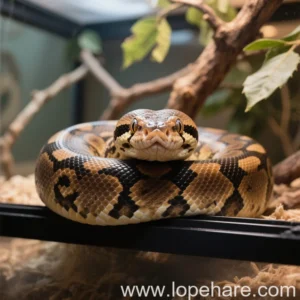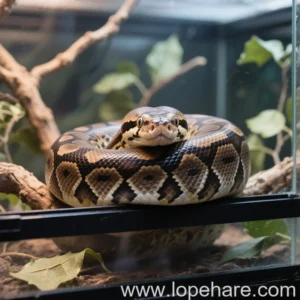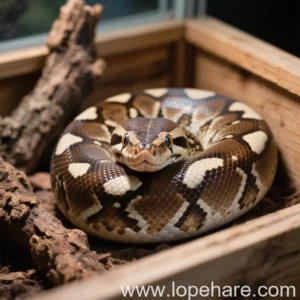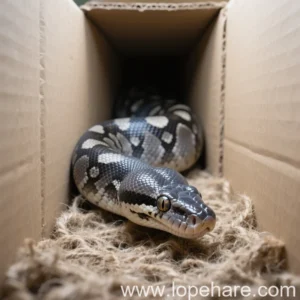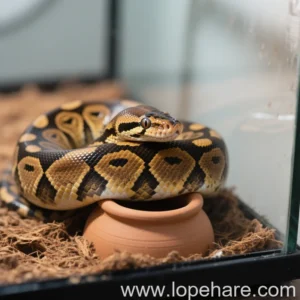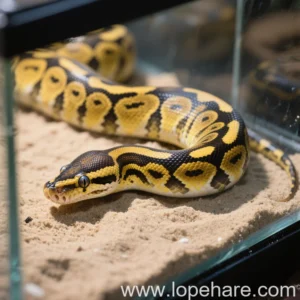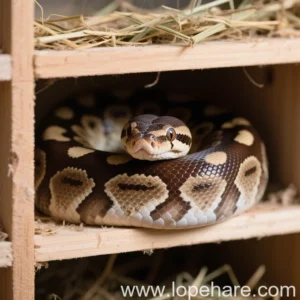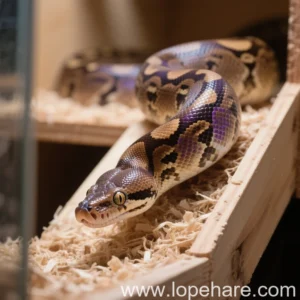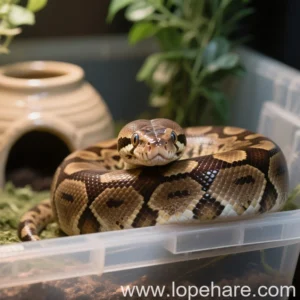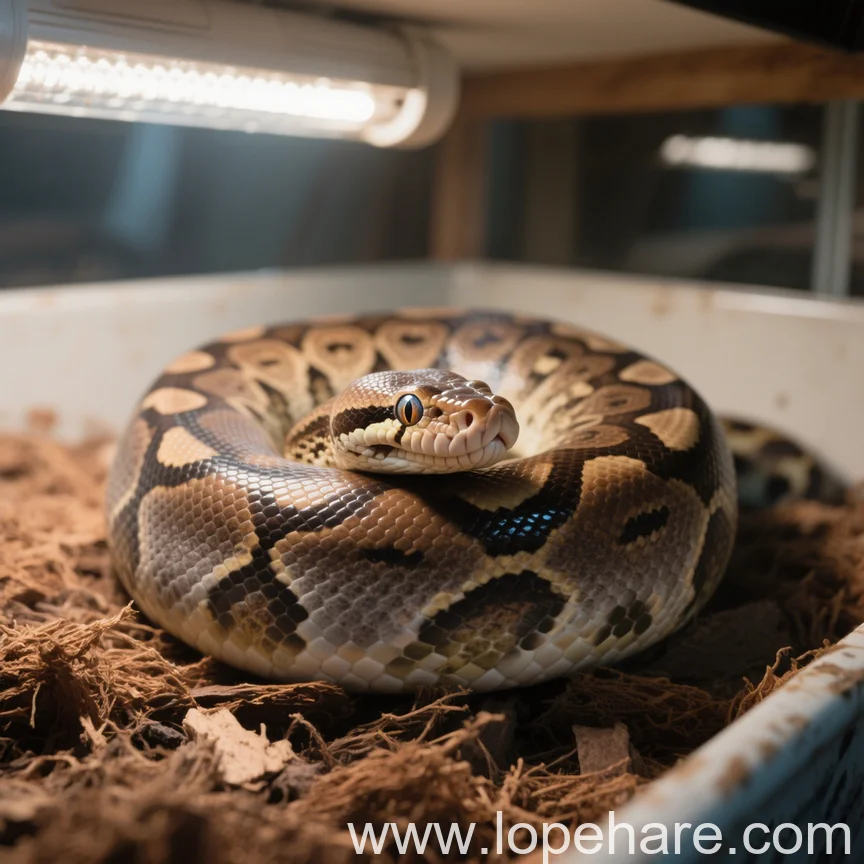
Reptile Husbandry
Post-Breeding Care for Ball Pythons: Helping Females Recover After Laying Eggs
Here at lopehare, we’re dedicated to providing comprehensive and professional information for keepers of unique pets, including the beloved Ball Python. Breeding can be a rewarding experience, but the health and recovery of the female after she lays her eggs is paramount. Gravid females expend a significant amount of energy and resources developing and laying clutches of eggs, which can number anywhere from 3 to 14 or more. Proper post-breeding care is essential to ensure her health and well-being for the long term. Let’s dive into the critical steps you need to take.
Helping Her Recover
The period immediately following egg-laying is crucial. Your female Ball Python has just completed a physically demanding process. Her body is depleted, she’s likely stressed, and her immune system may not be at its peak. Our primary goal is to support her recovery by providing optimal conditions for rehydration, nutritional replenishment, and stress reduction.
Immediate Post-Lay Actions
Once you are certain the female has finished laying (she will usually leave the nest box and explore her enclosure), remove the eggs carefully if you are incubating them. Avoid disturbing her more than necessary during this time. Ensure she has immediate access to fresh, clean water. Some keepers offer a soak in shallow, warm water for about 20-30 minutes shortly after laying, as this can help with rehydration and shedding if it’s imminent, but only if she seems calm and receptive. Avoid forcing her if she is stressed.
Rehydration and Nutritional Support
Rehydration is arguably the most immediate need. Offer fresh water daily. While the water soak can help, consistent access is key. After laying, a female Ball Python’s body condition will be noticeably different; she will be lighter and often appear thinner. Offering food should be done carefully.
Wait 2-7 days after laying before offering the first meal. The exact timing depends on the individual snake’s demeanor and apparent readiness. Start with a smaller-than-average meal, perhaps one size down from her usual prey size, to avoid overwhelming her system. If she takes it well, subsequent meals can gradually increase back to her regular size. Monitor her defecation to ensure her digestive system is functioning properly.
Nutritional supplementation, like calcium and vitamin dusting you might use for younger animals or feeders, is generally not needed in post-lay adults eating appropriate, gut-loaded prey, unless specifically advised by a reptile veterinarian based on her condition or blood work. Focus on providing high-quality, appropriately-sized prey items.
Monitoring Weight and Condition
Keeping track of her weight and body condition is vital for monitoring recovery. Weigh her a week after her first post-lay meal and then periodically (e.g., every 2-4 weeks) to see if she is gaining weight steadily. You should see her body condition improve, filling out from the depleted state she was in after laying. A healthy adult female Ball Python should have a rounded, not triangular, body shape. Understanding healthy body condition in snakes is a fundamental aspect of long-term care, and it’s especially important during recovery periods.
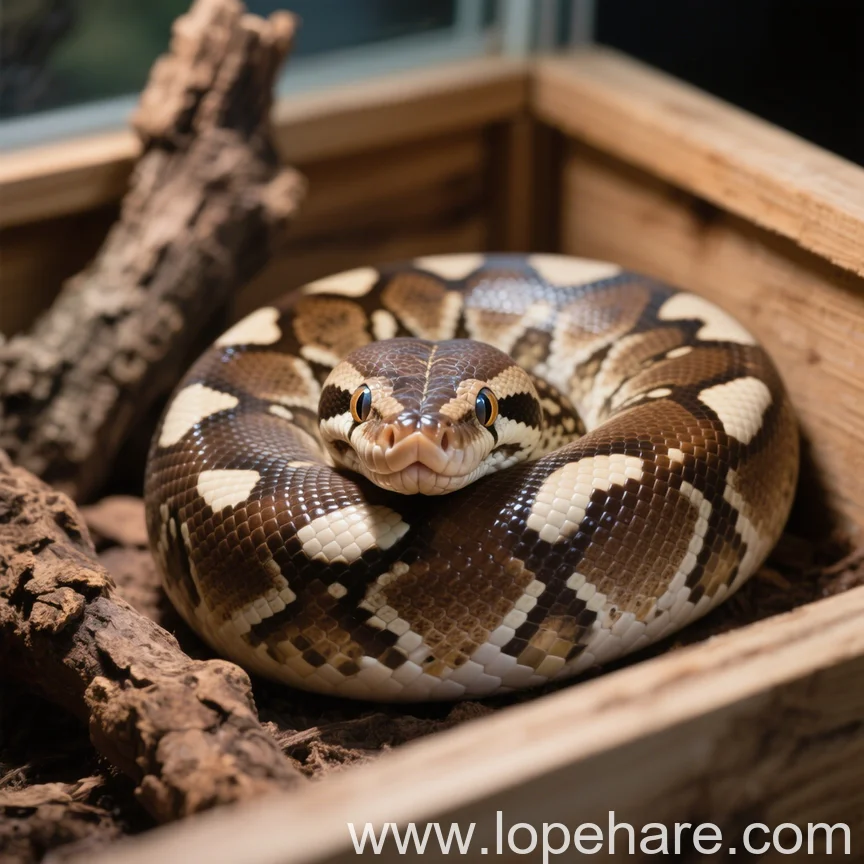
Enclosure Adjustments & Hygiene
The enclosure should be thoroughly cleaned and disinfected after the eggs are removed. Use a reptile-safe disinfectant. Replace all substrate. This minimizes the risk of bacterial or fungal infections, which a recovering snake might be more susceptible to. Maintain her usual preferred temperature gradient and humidity levels. Ensure hides are readily available so she feels secure.
Optimal parameters for a recovering female Ball Python enclosure typically include:
- Ambient Temperature: 78-80°F (25.5-26.5°C)
- Basking Spot Temperature: 88-92°F (31-33°C)
- Cool Side Temperature: 75-78°F (24-25.5°C)
- Humidity: 50-60%, with a higher spike during shedding.
Consistent, clean conditions are paramount for her to recover energy and health.
Watching for Complications
Even with the best care, complications can sometimes arise. Keep a close eye on your female for any signs of distress, lethargy that doesn’t improve, abnormal swelling, or refusal to eat after the initial recovery period. One serious complication is signs of egg binding in Ball Pythons (dystocia), where eggs are retained. While this is usually observed *before* laying is completed, post-lay issues can sometimes include retained infertile eggs or complications from the laying process itself. Seek veterinary attention immediately if you suspect any issues. According to sources like the Journal of Exotic Pet Medicine, prompt diagnosis and intervention are crucial for successful outcomes in reproductive complications.
Reducing Stress
Stress can impede recovery. Keep interaction to a minimum unless necessary for feeding, cleaning, or health checks. Provide multiple secure hides within her enclosure. Ensure the environment outside her enclosure is calm – avoid loud noises or excessive activity nearby. Allow her to rest and recuperate undisturbed as much as possible.

Conclusion: Prioritizing Recovery
Caring for a female Ball Python after she has laid eggs requires diligence and attention to detail. By focusing on rehydration, providing appropriate nutrition, maintaining impeccable hygiene, carefully monitoring her physical condition, and minimizing stress, you give her the best chance for a full and speedy recovery. Breeding is a significant physiological event, and her post-lay health should be your top priority. At lopehare, we believe that responsible pet ownership includes understanding and providing for the specific needs that arise during a pet’s life cycle, and post-breeding care for Ball Pythons is a prime example of this.
References:
- Cited information drawing upon common knowledge from reptile husbandry and veterinary practice. For specific conditions like dystocia, consult veterinary resources.
- Journal of Exotic Pet Medicine: Information regarding exotic animal health and complications. (Example: https://pubmed.ncbi.nlm.nih.gov/26615757/ – Note: Specific article cited is an example, actual citation would link to relevant research on ball python reproduction/dystocia if available and used).
